Exploring the Heart of Specialty Coffee in Minas Gerais
Earlier this summer, our Service and Quality Manager, David Adams, along with Managing Director Jeffrey Long, joined DRWakefield’s Hannah and Jamie on an unforgettable origin trip to Brazil. Over six packed days, they journeyed through Minas Gerais, visiting pioneering farms, cupping some of the finest coffees the region has to offer, and meeting the incredible people behind them.
This blog is David’s personal account of that journey, a diary of discovery, connection, and inspiration at origin. This is Part 1, covering the first three days of the trip, with visits to some remarkable producers and cooperatives shaping the future of Brazilian specialty coffee.
In this part, they arrive in Guaxupé, home to the SMC Specialty Coffee office of the Cooxupé Cooperative, where the journey begins with a warm welcome and a delicious cupping. From there, they travel to the iconic Fazendas Caxambú & Aracaçú, led by the ever-inspiring Ucha, before heading to the passionate young producers at Sitio Penha. On Day 3, they return to Sitio Maranhão, where the Betti family treated them to hospitality as rich as their coffees.
Curious to see how this year compares to last year’s Brazil origin trip? Check out what Hugh and Laura got up to in 2024 here.
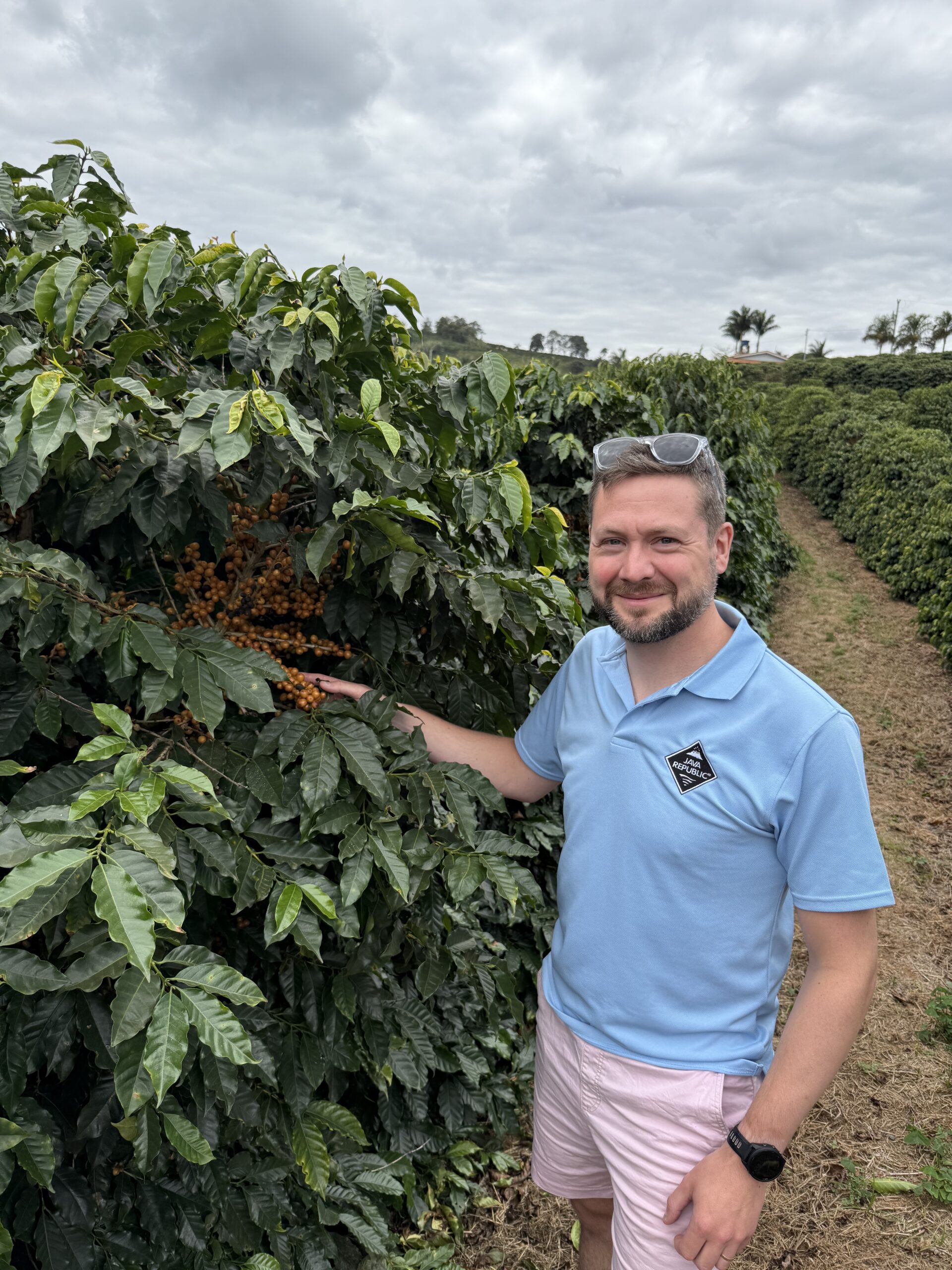
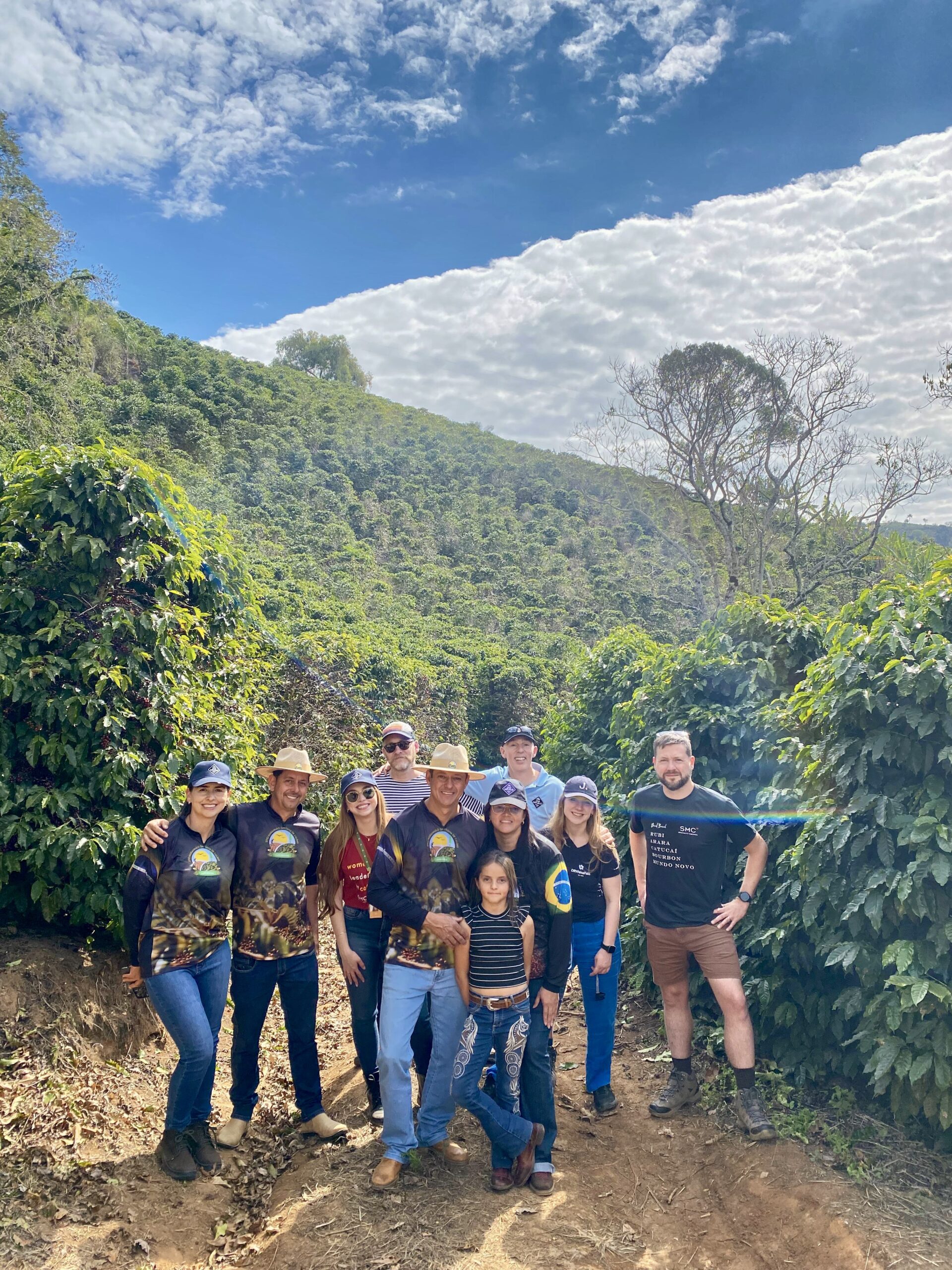
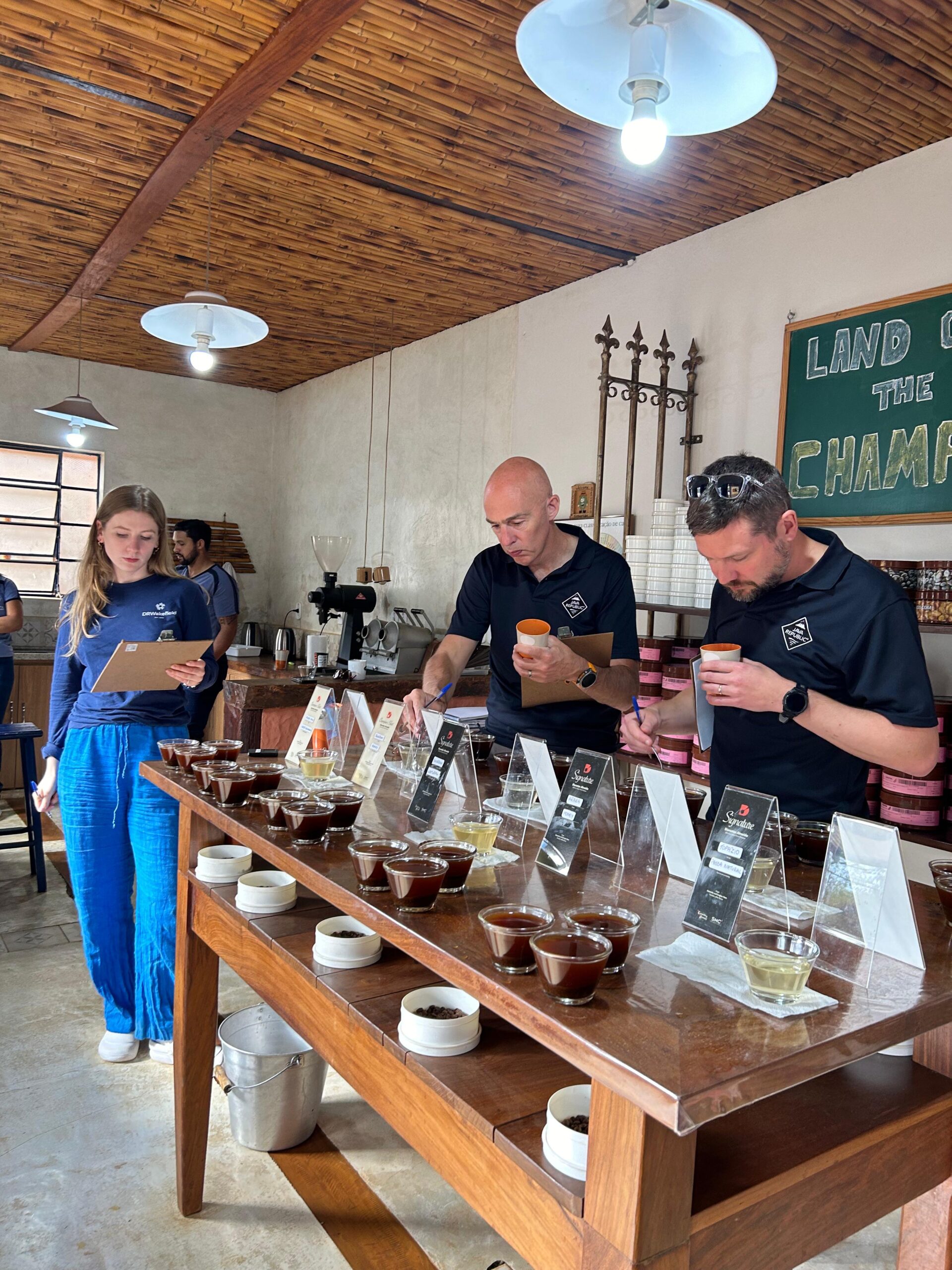
Day 1 – Arrival at Guaxupé:
After almost 24 hours of traveling with Hannah and Jamie from DRWakefield, we arrived at our hotel in the small city of Guaxupé. Guaxupé is located at an elevation of 760 meters, a short distance from the state boundary of São Paulo and has a population of approximately 50,000 people. It is home to the office of SMC, which is the speciality coffee wing of the Cooxupé Cooperative (Brazil’s largest coffee cooperative).
The team in SMC would be our guides/translators and liaisons for the next 6 days. Yana from SMC took us to have our first (of many) lunches in the city centre before we had our first cupping in the SMC head office, where we met the full team and were shown around this impressive set up.
SMC is a modern build with state-of-the-art facilities packed with highly skilled traders, logistics professionals, Q graders and roasters. This fantastic team lead by Maria Dirceia Mendes, was a finely tuned machine but with a warmth and hospitality that we would come to experience in spades over the next few days.
We cupped a selection of natural coffees (pulped/honey and fully natural) from recent harvests from some of the producers we were due to meet during our trip. An excellent way to start our coffee journey and all assisted with the expertise of Jamie and Hannah from DRWakefield. 2 top travel companions and experts in their field. We could talk coffee all day!
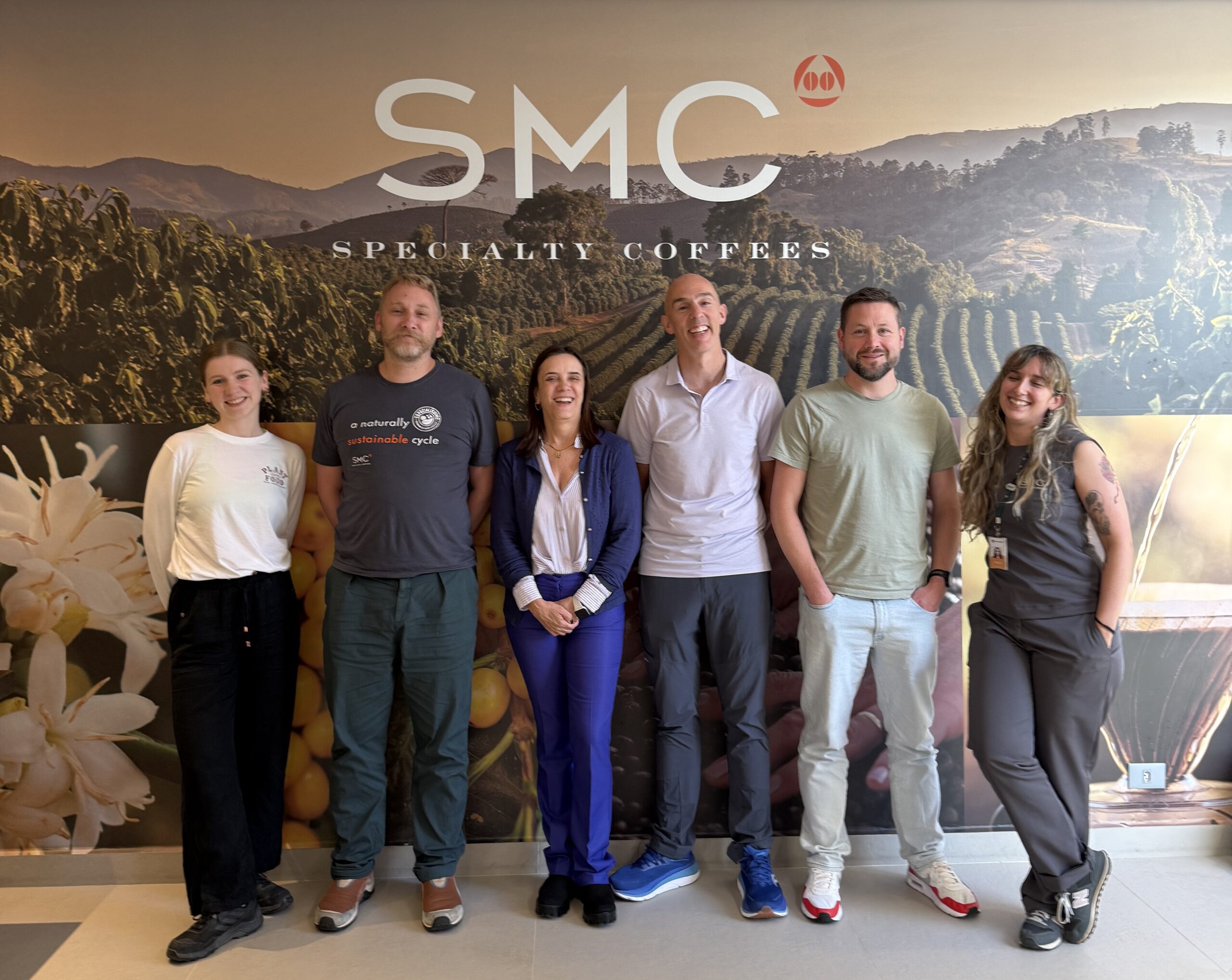
Day 2: Fazendas Caxambú & Aracaçú
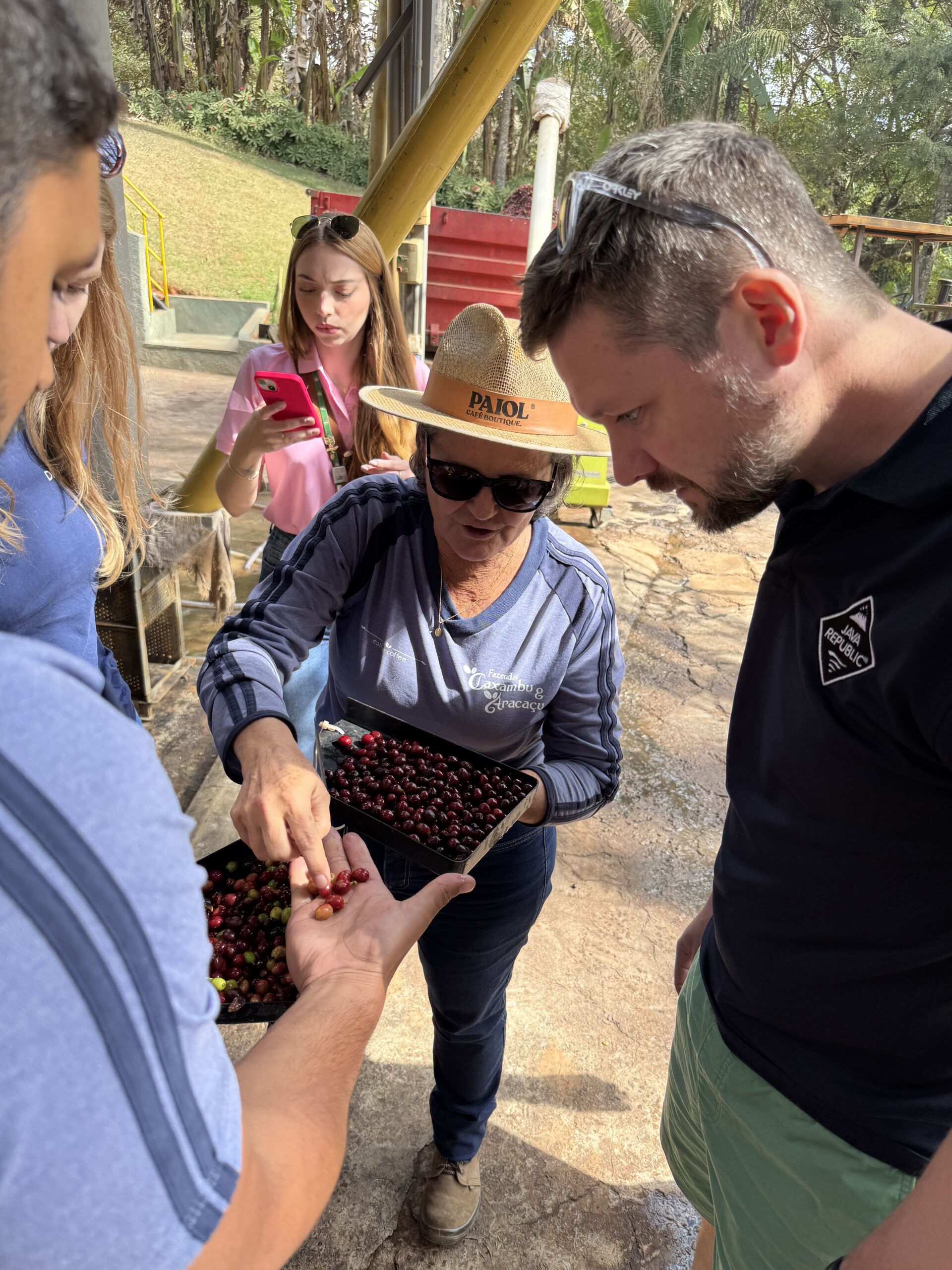
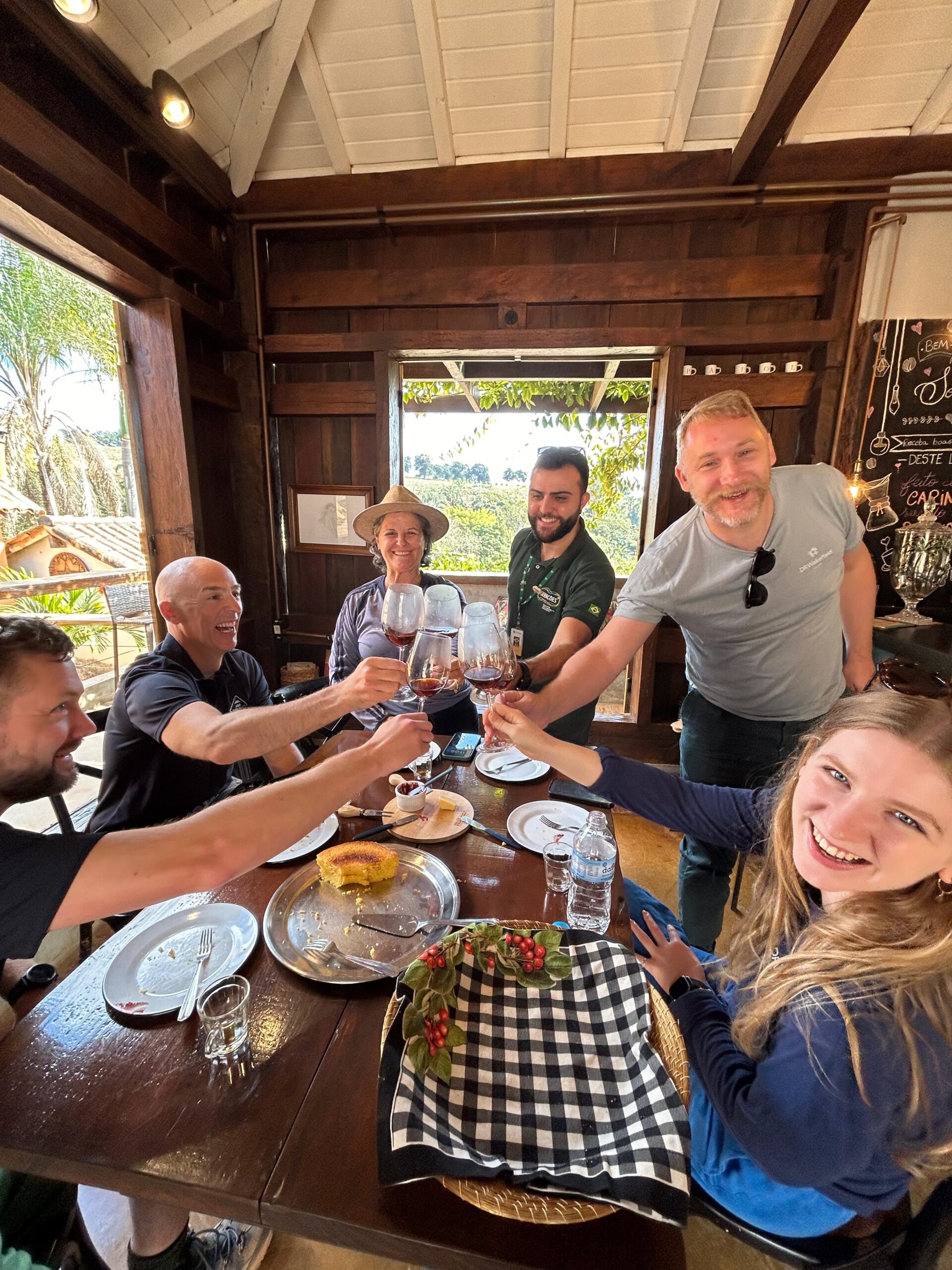
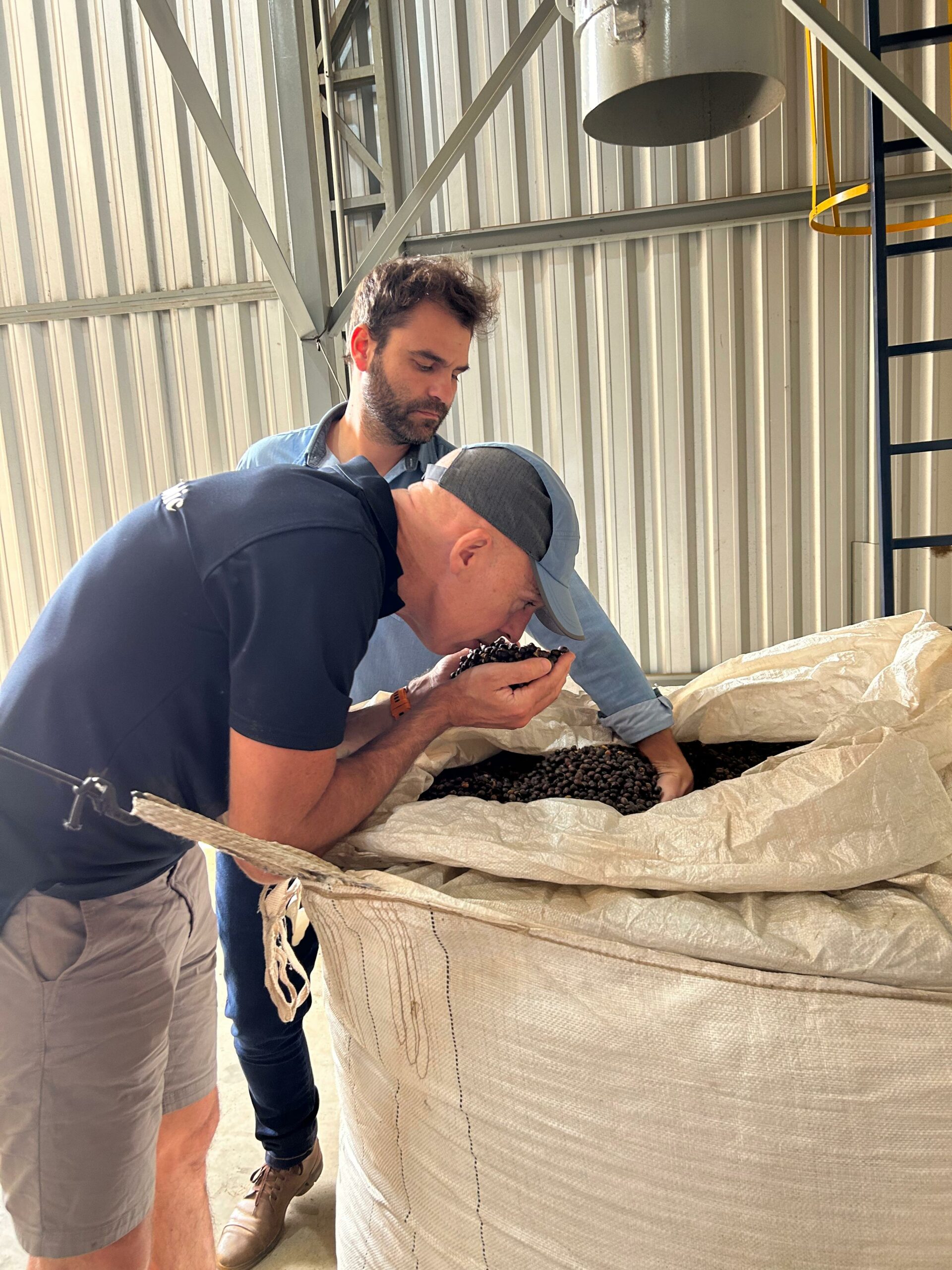
After a long drive from Guaxupe we arrived at the famous Fazendas Caxambú & Aracaçú. Run by a very talented team, led by the ever charismatic and innovative powerhouse, Ucha.
This farm has been on quite a journey since 2008 where they produced 2% specialty coffee. In 2024 that figure is 82%. Innovation, passion and investment are the words that come to mind with approximately 50 staff during harvest period, working hard to produce the best natural and pulped natural coffees they can.
Improving the ecology and ecosystem within the farm was a top priority for Ucha. With 1,200 native trees planted each year, 16,000 native trees planted in the last 10 years (2015-2025), and 20% giving fruits that animals eat. Beehives, grasses etc. are intercropped between the coffee trees. Biological monitoring (MOBI) was introduced to the farm with a year-round full-time job needed to maintain, biologists here first work to understand fauna before new insects are introduced. They are also part of the Gerações protocol, reducing inputs and increasing biological controls.
Technology such as colour sorters for the cherries, state of the art mechanical dryers, pulping machines and storage for their 16% moisture green beans (a process developed to dry the beans from 16% down to 13% by slowly drying in 1 tonne bags over a 30-day period). A process they say really enhances the flavour of the product and is backed by science and is in partnership with research from Flávio Borém.
Research shows there is a gas exchange that happens between the husk and cherry at precisely this level and was discovered by researching when pulped natural and natural start to diverge. After the 30 days, moisture likely to be 13% or so, so still drying but slower. This also saves inputs in driving moisture out of the bean. Johnathan (a cupping world champion) who has worked with Ucha on the farm for many years was on hand to validate this during our cupping session mid-way through the visit.
Other highlights included the Banga Coffee. This coffee, lying in the shade of banana trees in a quiet space away from the main farm and is fermented for 72 hours, covered in plastic and held at 37oC, patio dried for 12 days then at 16% in storage as above which is then rested for 30 days (all very complex). Crazy stuff but the end product justified this complicated process.
All of this together with the typical Brazilian hospitality made it a special visit with a special team of people.
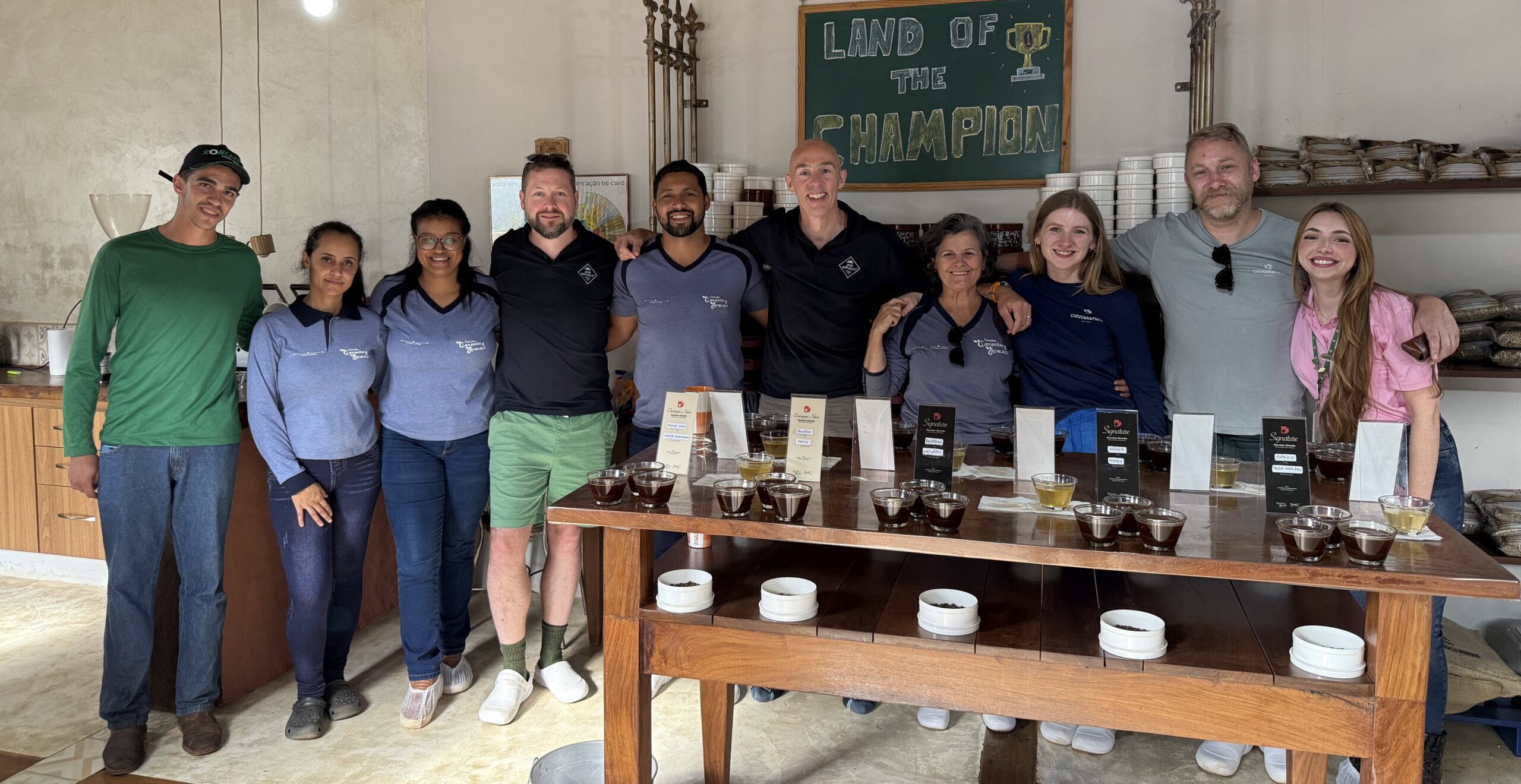
Day 2: Sítio Penha
We arrived at this beautiful farm on Day 2 greeted by Luis Fernando and Carline de Moraes. Together with their young daughter they have channeled their energy into creating a very unique space 1130 meters above sea level. The care, love and attention to what they do has resulted in a top performing Especialíssimo coffee.
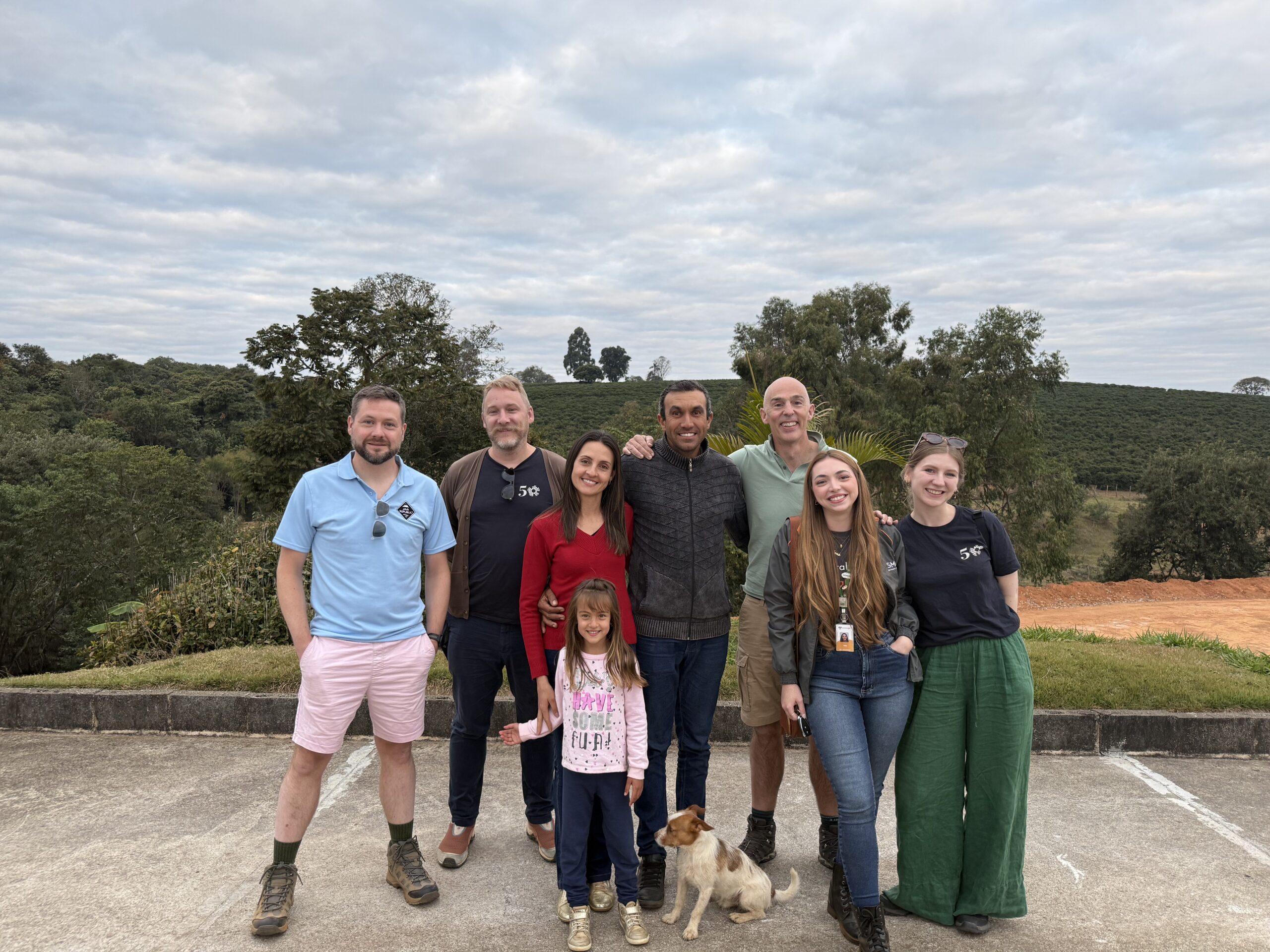
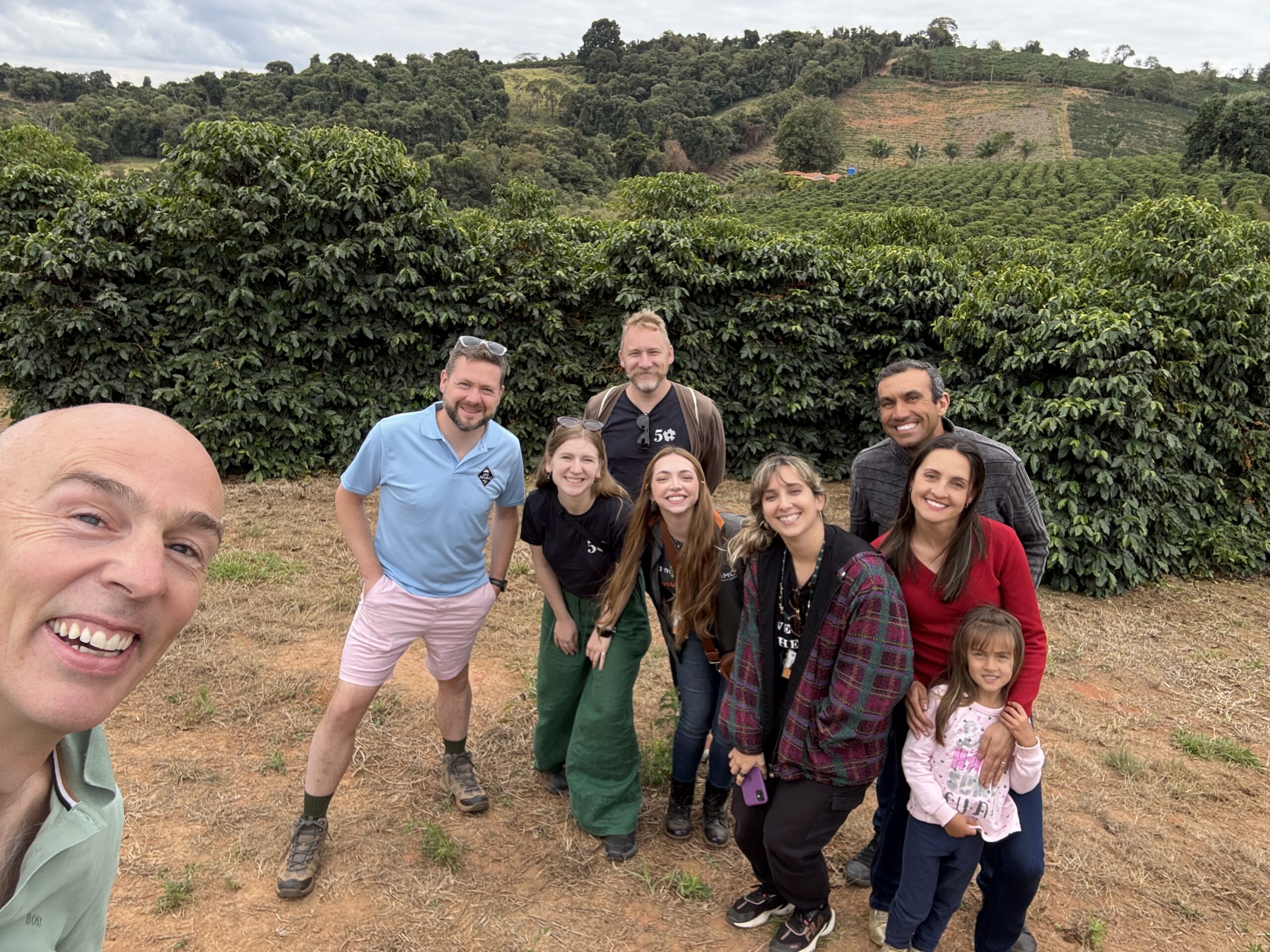
Members of Gerações, Donas do Cafe and contributors to Vinte, Luis started in coffee at 18 with his parents. They had some land on his mother’s side, so he got to try out coffee growing. That knowledge and passion grew slightly and then he met Carline. Carline’s dad was involved in coffee and so the knowledge grew, and the marriage became a partnership too.
Throughout their 5-year relationship with SMC they recognized their parents only knew so much and knowledge was needed, so the programs SMC and Cooxupe offer allowed them to continuously improve. They are a young couple and are looking forward to improving and growing more in specialty coffee which is expected to be 50% of their harvest this year.
Their original patio was hard earth and tarpaulin, but they knew it was not specialty. First, they saved and invested in a patio, then they looked to understand the soil and plants so they could improve the quality of the crop. This farm was not without its challenges, least of all the heavy hailstorms of 2021 which wiped out most of their harvest.
I really enjoyed this visit. A genuine hard-working family with the usual warmth and hospitality we have become accustomed to. You can get a glimpse of this special farm and our visit in this short video we captured during the trip.
Day 3: Sítio Maranhão
The sky was blue, and the views were spectacular. This was the home of the Betti family. Java Republic, returning from last year, they were delighted to have us back and welcomed us with a delicious breakfast and some of their most recently harvested coffee, roasted in an electric popcorn maker! It sure did the trick. We set off in the trailer to discover the farm.
Started by their great grandparents emigrating from Sicily, they were the first in the area to start growing coffee. Others followed suit over time.
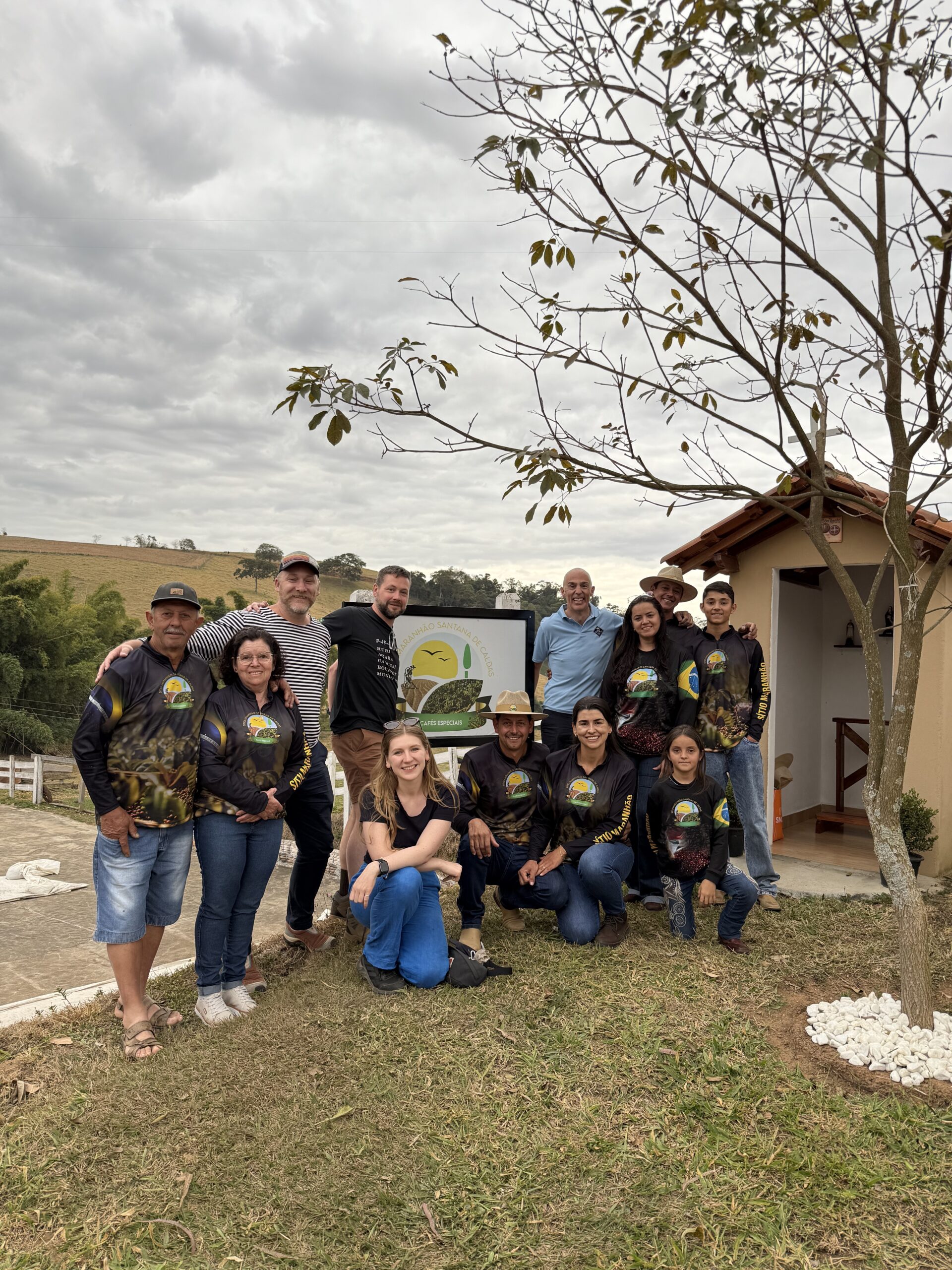
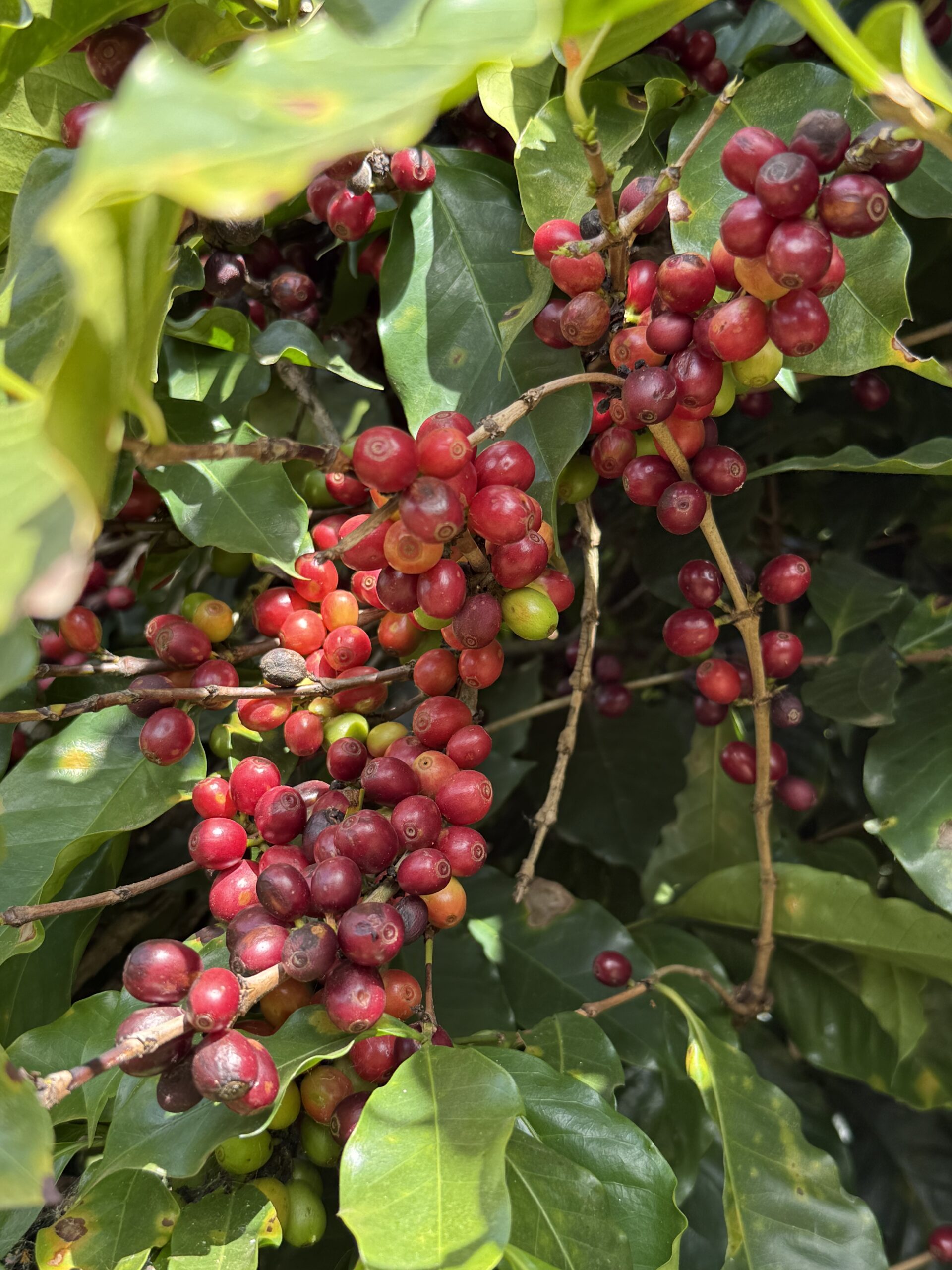
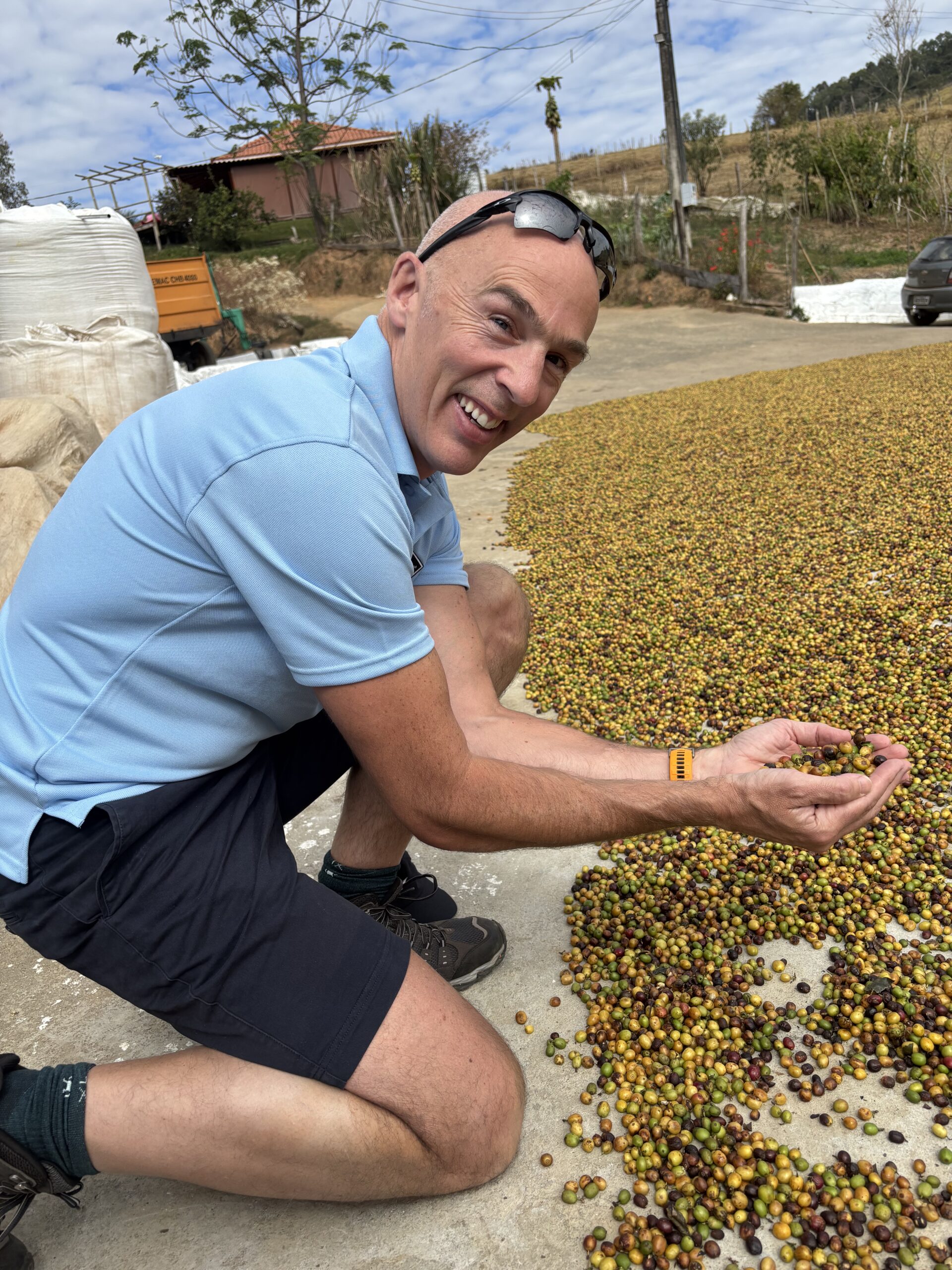
Now they pay great attention to harvesting and fermenting this beautiful coffee. Some of their process includes an 86-hour fermentation process in bags under trees to keep it cool. Dried to 15% moisture (sound familiar?) then, rested for 20 days. When the coffee is dry milled, it goes straight to the warehouse for safety.
Their challenges would include the difficulty in the terrain for harvesting and spraying, employing the clever use of drones to help them in this process, also birds knocking cherries to the ground before harvest and of course a common issue, labour. Safety of the harvest is essential. They look to move the beans off site as quickly as possible to avoid theft of this valuable product.
To finish off we were treated to an incredible feast of meat and Brazilian cuisine washed down with a few beers and local rum! All enjoyed from their newly renovated space near the pond which included a small pool, a built-in barbeque area and a tv where we watched the final of the club world cup. What a day!
Although we were already full – on coffee, memories, and plenty of steak, our journey through Brazil was far from over. We had three more incredible farms to visit, each with their own stories, innovations, and unforgettable moments. From dramatic landscapes to passionate producers, the second half of our trip was just as inspiring. Part Two of our Brazil Origin Trip is now live — click here to continue the journey.


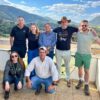
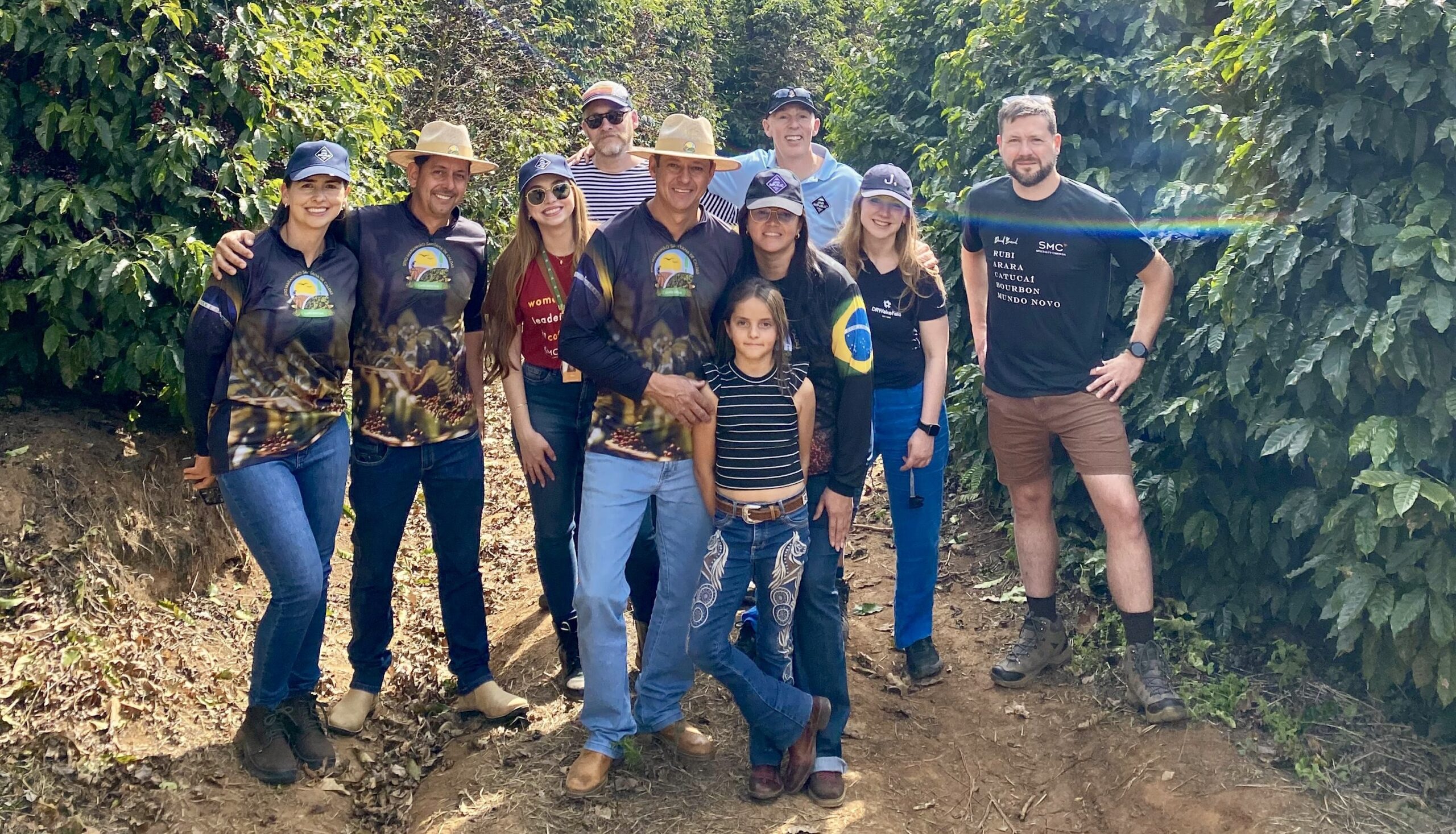
You must be logged in to post a comment.